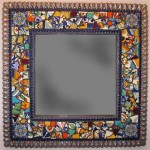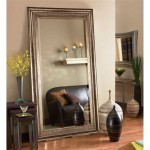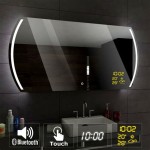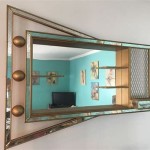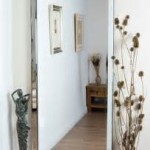Mirror Hanging Hardware: A Comprehensive Guide
The proper selection and installation of mirror hanging hardware are paramount to ensuring the safe and secure display of mirrors. A mirror's weight, size, and the wall's construction all influence the choice of appropriate hardware. Failure to use adequate hardware can result in the mirror falling, causing damage to the mirror itself, surrounding property, and potentially leading to personal injury. This article provides a detailed overview of various types of mirror hanging hardware, their applications, and best practices for installation.
Understanding the specific requirements of each mirror and wall type is crucial before purchasing any hardware. Factors such as the mirror's thickness, presence of a frame, and the wall's composition (drywall, plaster, concrete, etc.) will dictate the necessary load-bearing capacity and installation techniques. Ignoring these factors can lead to unstable mounting and potential accidents.
Key Point 1: Types of Mirror Hanging Hardware
A diverse range of hardware is available for hanging mirrors, each designed for specific applications and weight capacities. The selection process should prioritize safety and stability, considering the mirror's weight and the wall's structural integrity. The following sections describe common types of mirror hanging hardware.
D-Rings and Wire: D-rings are small, metal rings with a flat base that are attached to the back of the mirror frame. A wire, typically picture hanging wire or similar durable material, is then strung between the D-rings. This system allows the mirror to be hung from a single hook or nail in the wall. While relatively simple, this method is best suited for lighter mirrors, as the wire can stretch or break under significant weight. The placement of the D-rings is critical for ensuring the mirror hangs straight.
Sawtooth Hangers: Sawtooth hangers are characterized by their serrated edge, resembling a saw blade. They are typically attached to the top center of a mirror frame. This design allows for minor adjustments in the mirror's horizontal position after it has been hung. However, sawtooth hangers are generally not recommended for heavy mirrors due to their limited load-bearing capacity and potential for slippage. They are more appropriate for lightweight decorative mirrors.
Mirror Clips: Mirror clips are designed to hold the mirror directly against the wall, without a frame. These clips typically consist of two parts: a bottom clip that supports the mirror's weight and a top clip that secures it in place. The clips are often made of plastic or metal and come in various styles to accommodate different mirror thicknesses and aesthetic preferences. Mirror clips are commonly used in bathrooms and other areas where a frameless look is desired.
Z-Bar Hangers (French Cleats): Z-bar hangers, also known as French cleats, provide a secure and flush mounting solution for heavier mirrors. This system consists of two interlocking metal strips, one attached to the back of the mirror and the other to the wall. The angled design of the Z-bars allows the mirror to be easily lifted onto the wall-mounted strip, distributing the weight evenly. Z-bar hangers are a robust option for large and heavy mirrors, offering a high degree of stability and preventing the mirror from tilting forward.
Heavy-Duty Hooks and Anchors: For mirrors that exceed the weight capacity of standard hooks and nails, heavy-duty hooks paired with appropriate wall anchors are necessary. Wall anchors, such as toggle bolts, molly bolts, or screw anchors, provide a secure grip in drywall or plaster. The choice of anchor depends on the wall's composition and the weight of the mirror. It is crucial to select anchors that are specifically designed to withstand the anticipated load. Heavy-duty hooks should be constructed of durable materials like steel and have a high weight rating.
Mirror Mounting Tape: Double-sided mirror mounting tape offers a quick and easy alternative to traditional hardware for lightweight mirrors. This tape is specifically formulated to adhere strongly to both the mirror's back and the wall surface. However, it is essential to use tape that is specifically designed for mirror mounting, as other types of double-sided tape may not provide sufficient adhesion or may damage the mirror's backing. Mirror mounting tape is best suited for small, lightweight mirrors and should not be used as the sole support for heavier items.
Key Point 2: Selecting the Right Hardware Based on Mirror Weight and Wall Type
Choosing the appropriate mirror hanging hardware necessitates a thorough understanding of the mirror's weight and the wall's composition. Overlooking these factors can lead to unstable mounting and potential safety hazards. A careful assessment of these elements is paramount before any installation begins.
Mirror Weight Considerations: Accurately determining the mirror's weight is the first step in selecting the appropriate hardware. This information is often available from the mirror's manufacturer or retailer. If the weight is not readily available, it can be estimated based on the mirror's dimensions and thickness. It is always prudent to overestimate the weight slightly to ensure a safety margin. The selected hardware must have a weight rating that exceeds the mirror's weight, accounting for any additional stress or strain.
Wall Type Considerations: The type of wall construction significantly influences the choice of hanging hardware and the installation technique. Different wall types offer varying degrees of support and require specialized anchors. The most common wall types include drywall, plaster, and concrete.
Drywall: Drywall is a common wall material in residential construction but offers limited structural support. Hanging heavy mirrors on drywall requires the use of wall anchors, such as toggle bolts, molly bolts, or screw anchors. These anchors expand or grip the drywall from behind, providing a secure hold. The weight rating of the anchors must be sufficient to support the mirror's weight. When installing anchors in drywall, it is crucial to avoid over-tightening, which can damage the drywall and weaken the anchor's grip.
Plaster: Plaster walls are generally more durable than drywall but can be challenging to work with. Drilling into plaster can cause it to crack or crumble. When hanging mirrors on plaster walls, it is important to use specialized drill bits designed for plaster and to drill slowly and carefully. Wall anchors, such as toggle bolts or expansion anchors, are recommended for providing a secure hold. It is also advisable to reinforce the area around the anchor with patching compound to prevent further cracking.
Concrete: Concrete walls offer the strongest support but require specialized tools and hardware. Drilling into concrete necessitates the use of a hammer drill and concrete drill bits. Concrete anchors, such as wedge anchors or sleeve anchors, are designed to expand and grip the concrete. The size and type of anchor should be selected based on the mirror's weight and the thickness of the concrete. Professional installation may be necessary for hanging heavy mirrors on concrete walls.
Key Point 3: Best Practices for Mirror Hanging Installation
Following best practices during mirror hanging installation is crucial for ensuring safety and stability. This includes proper measurement, accurate drilling, and secure attachment of the hardware. Taking the time to perform each step carefully will minimize the risk of accidents and ensure that the mirror remains securely mounted.
Accurate Measurement and Marking: Before drilling any holes, accurately measure and mark the desired location for the mirror. Use a level to ensure that the mirror will hang straight. It is also helpful to use a stud finder to locate wall studs, which provide the strongest support for hanging mirrors. If studs are not available in the desired location, use appropriate wall anchors to compensate for the lack of structural support.
Proper Drilling Techniques: When drilling holes for wall anchors or screws, use the correct size drill bit as specified by the anchor manufacturer. Drill slowly and carefully, avoiding excessive pressure that could damage the wall. For plaster walls, use a specialized drill bit designed for plaster to minimize cracking. After drilling, clean out any debris from the hole before inserting the anchor.
Secure Hardware Attachment: Ensure that all hardware is securely attached to both the mirror and the wall. Tighten screws and bolts firmly, but avoid over-tightening, which can strip the threads or damage the wall. For mirror clips, ensure that the clips are properly aligned and that the mirror is securely seated in the clips. Regularly inspect the hardware for any signs of loosening or wear and tear. Replace any worn or damaged hardware immediately.
Safety Precautions: When working with power tools, always wear safety glasses to protect your eyes from debris. Use caution when handling sharp objects, such as drill bits and screws. If you are unsure about any aspect of the installation process, consult a professional installer. Consider having a second person assist with lifting and positioning heavy mirrors to prevent accidents. Before drilling, check for any hidden electrical wires or plumbing pipes in the wall to avoid potential hazards.
By carefully selecting the appropriate mirror hanging hardware, considering the mirror's weight and wall type, and following best practices for installation, it is possible to safely and securely display mirrors of various sizes and weights. Proper installation not only enhances the aesthetic appeal of the space but also ensures the safety of the mirror and its surroundings.

Glacier Bay Mirror Mounting Hanging Hardware Kit 805254 The Home Depot

Heavy Duty Mirror Hanging Hardware Kit With Hangers Leveling 100 Lbs

Heavy Picture Mirror Hanging Kit 50 Kg

Hillman 4 Count 20lb Wide Channel Mirror Clips In The Picture Hangers Department At Com

Picture Mirror Hangers Heavy Duty Large Frame Kit With Fittings For Hard Wall

Mirror Holder Clips Kit Clear Plastic Mounting Temu

Ook 1 8 In Offset Clip With Hardware Piece 50227 The Home Depot

77 Pc Pro Mirror Hanging Kit By Hillman At Fleet Farm

4 Set Mirror Clips Hanging Hardware Holder Hang Com

How To Hang A Hanging Mirror Without Accompanying Hardware



